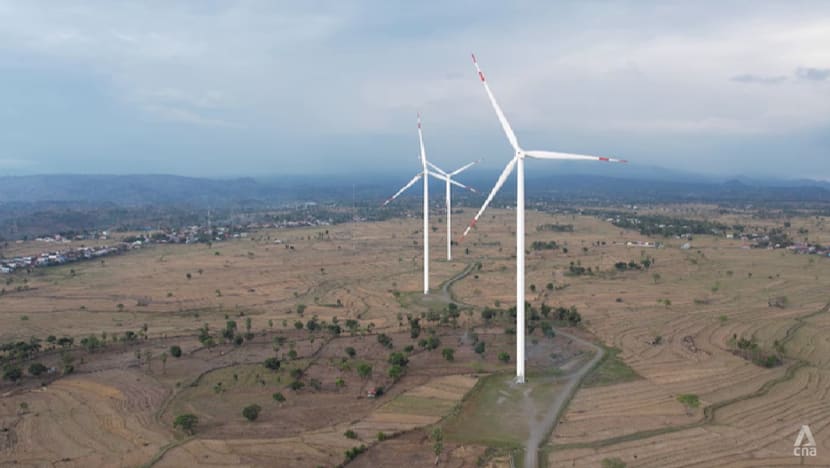Indonesia to boost renewable push with Tolo Wind Farm expansion
Construction is expected to begin in late 2026 and is expected to add about 130MW of capacity to the country’s renewable energy mix.

The Tolo Wind Farm, located about 6km inland from the South Sulawesi coast, began operations in 2019.

This audio is generated by an AI tool.
JENEPONTO, South Sulawesi: Indonesia plans to expand the Tolo Wind Farm in South Sulawesi to boost the share of renewable energy in its national mix.
Construction is expected to begin late next year and is expected to add about 130 megawatts (MW) of new capacity.
The wind farm, located about 6km inland from the South Sulawesi coast, began operations in 2019.
Its 20 giant turbines, spread across 60ha, generate around 72MW of clean electricity – enough to power about 320,000 households.
HARNESSING THE WIND
Indonesia’s vast coastlines offer abundant wind resources.
The Tolo project, situated in Jeneponto Regency, takes advantage of the region’s high average annual wind speeds, said operator Vena Energy.
The turbines use direct drive technology, which means they have fewer moving parts and do not require a gearbox to connect the rotor to the generator.
They can still generate power even during the low-wind season, from November to May, as they only require a minimum wind speed of 3ms.
The company’s asset manager Wahyudin Beta said maintenance schedules are planned around seasonal wind patterns.
“We take advantage of the low-wind period to proactively perform maintenance and procure spare parts, ensuring that all work is completed before the high-wind season begins,” he explained.
“This allows us to maximise production output during peak wind conditions.”

FINANCIAL BACKING, LOCAL SUPPORT
Projects like Tolo require major upfront investment.
The Asian Development Bank (ADB), which supports social and economic development in Asia, partly financed its initial phase with a US$56 million loan, after considering several factors.
“First, is the long-term viability and bankability of the project, to make sure that it is built and operated within budget, scope and capacity,” said Jiro Tominaga, ADB’s country director for Indonesia.
The second factor is technical soundness - ensuring that proven technologies are used and the experts involved can meet international standards and mitigate potential risks.
The third focuses on environmental and social safeguards, including issues such as resettlement, biodiversity and community engagement, he added.
The wind farm’s construction required land from residents across eight villages.
One resident from a village in Parasangan Beru sold part of his land for an access road and said the process went smoothly.
“All residents are satisfied as their land was bought at a fair price. Without official sale deeds, the land could have been taken by others,” he said.
“Thankfully, all payments were made in cash, preventing future disputes and ensuring smooth relations between the community and the company.”
NEXT PHASE OF EXPANSION
PLN, Indonesia’s state-owned utility company, has issued a tender for the wind farm’s next phase. The results are expected to be announced by mid-December.
According to Rudy Sembiring, Vena Energy’s country head for Indonesia, construction could start in late 2026 or early 2027 if the company’s bid is successful.
The expansion could comprise around eight to 10 new turbines, each with a capacity between 6MW and 7MW, he added.
"There have been developments in turbine technology – turbines are much bigger than they used to be. So, we are looking at fewer turbines, but by no means on a smaller scale,” he added.
However, Indonesia's wind energy capacity remains modest.
Despite having an estimated 150 gigawatts of potential wind power, the country currently produces just a fraction of that – 150MW.
Experts say a key challenge is the slow expansion of power grids to support renewable energy growth.
“This is one of the Achilles’ heels that we currently have in our electricity planning system,” said Fabby Tumiwa, CEO of the Institute for Essential Services Reform, a think tank in the energy sector.
“Building the project itself may take three to four years. But building the grid could take longer. You need to ensure that you can build the grid on time so that when wind projects are ready to be connected to the grid, it is there,” he added.
Indonesia originally aimed to generate 23 per cent of its energy from renewables by 2025, a goal set under its 2014 National Energy Policy.
But the government has revised that target down to between 17 and 20 per cent, citing slower-than-expected progress.




















